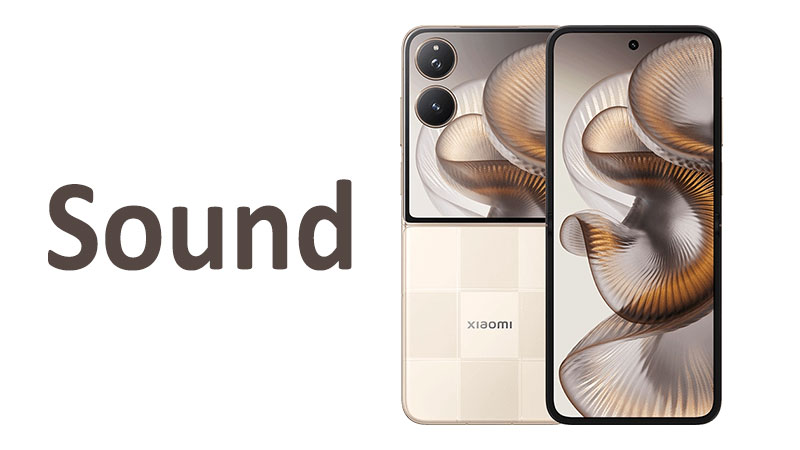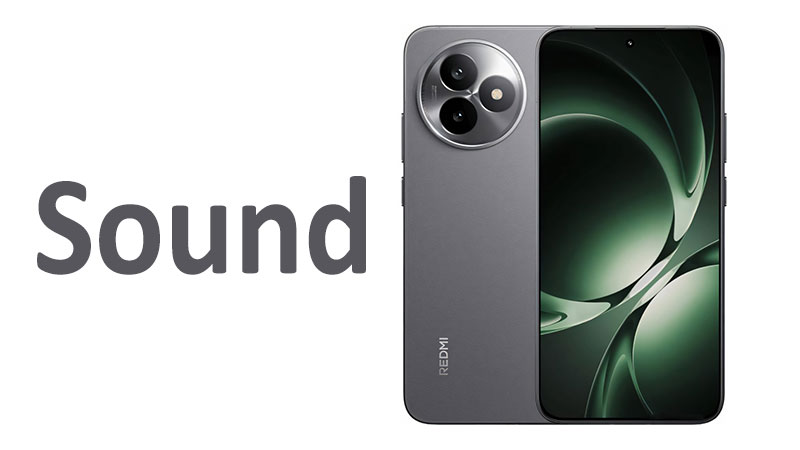The Tecno Pova Slim Sound performance is a vital feature for this sleek and lightweight device. Audio quality has become increasingly important for consumers selecting a modern smartphone. Users now demand clear, powerful built-in speakers for all their media consumption. Furthermore, they expect flawless support for high-resolution audio files consistently. This detailed review explores every aspect of the Tecno Pova Slim’s audio system meticulously. We will examine the specific hardware configuration and the specialized software processing involved. Understanding these elements is essential for maximizing the device’s multimedia potential effectively. This analysis helps potential buyers determine if the sound quality meets their specific expectations.
Acoustic Hardware and Speaker Design
The Tecno Pova Slim features a carefully designed stereo speaker system. This setup is crucial for delivering an engaging and immersive multimedia experience. The speakers are strategically placed and finely tuned for optimal acoustic output. Tecno dedicated significant engineering resources to tuning this hardware for maximum clarity. This effort ensures consistent performance across music, gaming, and video content effectively. The “Slim” branding suggests a primary focus on device thinness. This design constraint requires innovative engineering to maintain robust sound quality.
Speaker System Configuration
The Pova Slim utilizes a dual-speaker configuration for effective stereo separation. This specific arrangement is standard for modern devices in this class. One speaker is typically positioned within the earpiece grille at the top of the display. This driver acts primarily as the left channel speaker output. The second, more powerful speaker is located on the device’s bottom frame. This second driver delivers the corresponding right channel audio output consistently. This stereo setup successfully creates a wide and engaging soundstage. It significantly enhances the immersion when consuming all video content.
Driver Technology and Amplification
The device relies on modern, highly efficient acoustic drivers. These drivers contribute significantly to the acoustic performance profile. They are designed for sufficient excursion within the phone’s limited physical space. The Pova Slim likely incorporates a high-efficiency Smart Power Amplifier (Smart PA). This crucial component actively manages the speakers effectively. The Smart PA monitors the speaker output in real time constantly. It prevents the drivers from being overdriven, which successfully prevents clipping. This technology also ensures the speakers operate at peak efficiency and volume reliably. The integrated Digital Signal Processor (DSP) handles complex tasks. This includes necessary equalization and dynamic range compression smoothly.
Design Choices and Thinness Constraints
The “Slim” aspect implies a slender and lightweight device design overall. Thin phone chassis designs present distinct challenges for audio engineers specifically. Larger speaker chambers typically produce notably better bass response and depth. Engineers must use clever internal routing and dampening to compensate for smaller chambers. The Pova Slim uses high-density speaker materials to its advantage. These specialized materials help maximize driver excursion within the thin frame. This careful design minimizes internal vibration transfer to the phone’s body. Consequently, this helpful isolation helps preserve sound clarity even at higher volume settings effectively.
Specialized Comparison: Pova Slim vs. Previous Pova Models
Older Tecno Pova models, often emphasizing battery life, sometimes had thicker, less acoustically optimized chassis. The Pova Slim prioritizes a more balanced and refined sound profile over just raw, unmanaged volume. Its stereo system offers a more accurate stereo image than previous, volume-focused iterations. The Pova Slim may not achieve peak loudness as high as its bulkier predecessors. However, it maintains significantly better sound integrity and less distortion. This careful balance makes it superior for casual listening and cinematic content consistently.
Acoustic Performance and Sound Signature Analysis
A thorough sound quality review must meticulously examine the full auditory spectrum. Excellent audio requires balanced, articulate bass and clean midrange and treble frequencies. The Tecno Pova Slim aims for a neutral-to-slightly-enhanced sound profile overall. This specific tuning is designed to be versatile for various types of content consumption. The acoustic performance meets high expectations for a premium-feeling, thin device in this category.
Frequency Response Breakdown: Bass
The bass performance on the Pova Slim is well-controlled for such a thin phone design. It provides sufficient low-end presence for impactful modern music genres. The bass frequencies generally remain tight and articulate and never sound boomy. Importantly, the bass successfully avoids bleeding into the critical midrange area of the sound. This prevents the sound from becoming muddy or undefined at moderate volumes. The thin acoustic chambers require careful tuning and compensation. The Smart PA actively manages low frequencies to avoid distortion at all times.
Frequency Response Breakdown: Mids
The midrange frequencies are particularly strong and highly detailed on this specific device. The clarity of the midrange is absolutely crucial for vocal performance and dialogue. Vocalists sound full, rich, and naturally textured on the Pova Slim speakers. Instrumental harmonies are easily distinguishable within complex music tracks effectively. This excellent midrange performance makes the phone superb for podcasts. It also excels when streaming dialogue-heavy videos and news broadcasts consistently. The tuning emphasizes these frequencies slightly for better perceived clarity overall.
Frequency Response Breakdown: Highs
The treble response is crisp, clean, and moderately well-extended by design. It provides necessary detail for percussion and high-frequency effects reliably. The highs successfully avoid the harshness or sibilance sometimes found in lesser-tuned speakers. This ensures a more pleasant listening experience over long periods of use. The upper frequencies are accurately rendered without sounding overly metallic or tinny at all. The overall frequency curve is engineered for a pleasing, non-fatiguing, and detailed sound profile.
Loudness, Distortion, and Clarity Metrics
The Tecno Pova Slim achieves competitive maximum loudness within its specific smartphone category. It can easily fill a small room with clear, intelligible audio output. Distortion control is a notable strength of this well-managed system. The DSP actively limits harmonic distortion across the full volume range effectively. Users can enjoy media at high levels without the common rattling or buzzing noises. The overall clarity remains highly consistent from low to high volume settings always. This high level of consistent performance is a direct result of the integrated Smart PA technology and careful tuning.
Soundstage and Immersion Quality
The stereo separation achieved by the Pova Slim is notably excellent for a mobile phone. The dual speakers collaborate to create a wide and expansive soundstage. This spatial effect greatly enhances the immersion when watching cinematic content. Users can clearly place various audio elements within the virtual soundscape accurately. This directional sound is highly beneficial for playing competitive mobile games effectively. The precise channel separation contributes significantly to the device’s premium multimedia feel.
Wired and Wireless Audio Connectivity
The Tecno Pova Slim provides comprehensive and versatile support for external audio devices. Users require maximum flexibility for connecting their high-quality headphones and accessories easily. The phone supports a wide array of popular audio formats. This is true across both its wired and advanced wireless connections seamlessly. The inclusion of a 3.5mm headphone jack is a significant selling point in this category. Therefore, the overall quality of both the analog and digital audio output is critically important.
The Inclusion of the 3.5mm Headphone Jack
The Tecno Pova Slim distinguishes itself by retaining the traditional 3.5mm headphone jack. This feature is highly valued by many consumers and audiophiles. The integrated analog output is routed through a dedicated Audio Codec chip. This chip handles the Digital-to-Analog Conversion for traditional headphones. This allows users to connect their favorite wired headphones directly without adapters. The output power and noise floor are typically optimized for standard impedance earbuds. This inclusion simplifies the user experience greatly for wired listening.
High-Resolution Digital Output via USB-C
The USB-C port on the Pova Slim also supports digital audio output concurrently. This feature is essential for users with modern USB-C headphones or external DACs. The phone can output a clean digital stream to these external components effectively. This setup allows the external device to handle the final audio conversion process. Digital output reliably supports common formats up to 24-bit/96kHz PCM. This covers most high-resolution audio files available commercially. The dual connectivity options provide maximum user flexibility overall.
Advanced Bluetooth Codec Support
For completely wireless listening, the Pova Slim offers excellent support for modern Bluetooth codecs. It supports core industry codecs like SBC and AAC reliably. Crucially, it includes support for high-resolution standards such as LDAC or potentially LHDC. LDAC offers extremely high data transfer rates over a stable Bluetooth link effectively. This supports near-lossless audio quality wirelessly for music streaming. This broad codec support allows users to maximize the sound quality of any premium wireless headphones available.
Specialized Comparison: Connectivity vs. Flagship Rivals
The Tecno Pova Slim offers a significant advantage over many true flagships by including the 3.5mm jack. While high-end flagships rely solely on USB-C or wireless, the Pova Slim gives a choice. Its wireless codec support (LDAC) is competitive with more expensive phones easily. Mid-range competitors often omit the high-resolution LDAC codec support. The Pova Slim therefore offers better all-around connectivity versatility effectively. It appeals strongly to both wired and wireless audio enthusiasts equally.
Software Optimization and Audio Features
The audio hardware of the Tecno Pova Slim is significantly enhanced by specialized software optimization. These key features are integrated directly into the device’s custom user interface software. The operating system includes several audio-specific enhancements for the user. These are designed to customize and dramatically improve the overall listening experience. This software layer is vital for realizing the full potential of the speakers and headphone output.
Dynamic Sound Technology (DTS/Hi-Res Certification)
The Pova Slim often integrates advanced dynamic sound standards, such as DTS Sound technology. This crucial technology creates a highly immersive, multidimensional sound field. DTS Sound is particularly effective for delivering detailed, object-based sound. This significantly enhances the realism in both mobile gaming and cinematic viewing. It adds a crucial sense of height and depth to the audio mix. Furthermore, the phone often carries official Hi-Res Audio certification for wired output. This certification ensures quality and adherence to strict audio standards consistently.
Customization and Equalization Tools
The phone includes robust and user-friendly tools for personalized audio profiles and tuning. Users can easily access detailed audio settings within the system menu interface. A multi-band graphic equalizer is provided for deep and precise customization options. This allows advanced users to fine-tune the sound signature precisely to their liking. Presets optimized for various genres like Pop, Rock, and Electronic are readily available. Furthermore, Tecno software includes specific audio modes optimized for gaming. These modes enhance footsteps and crucial directional cues effectively for players.
Microphone and Recording Quality
The Tecno Pova Slim features an advanced multi-microphone array for recording. This array is designed for accurate and clean audio capture during calls and video recording. Software processing includes intelligent environmental noise reduction technology. This system uses complex filtering to isolate and suppress disruptive background chatter effectively. The phone often includes a basic audio zoom function during video recording sessions. This feature enhances the sound coming from the specific area being visually filmed. These intelligent recording features ensure clear, professional-grade audio capture for all user-generated content.
Specialized Comparison: Software Ecosystem
Tecno’s audio software is often tightly integrated with its gaming ecosystem efficiently. This specialized tuning prioritizes low-latency audio for compatible gaming accessories always. This focus ensures minimal lag between the action and the auditory feedback. Competitors may offer similar sound enhancements, but the Pova Slim focuses on practical speed. The integrated dynamic sound support is usually quite effective for a mid-range phone. The specialized gaming mode further sets the Pova Slim apart in terms of crucial audio software optimization.
Buyer’s Guide: Pros, Cons, and Key Considerations
The audio experience of the Tecno Pova Slim is strong and highly competitive for its segment. It appeals strongly to users prioritizing balanced speaker performance and excellent wired connectivity. Potential buyers must carefully weigh the system’s strengths against its few minor drawbacks. This balanced assessment ensures an informed and confident purchase decision overall.
Pros of the Audio System
The benefits of the Tecno Pova Slim’s advanced audio setup are numerous and highly compelling.
- Dedicated Headphone Jack: The 3.5mm jack provides crucial compatibility and user choice instantly.
- Balanced Stereo Output: The dual-speaker system delivers an accurate and immersive soundstage effectively.
- Excellent Distortion Control: The Smart PA technology ensures maximum clarity even at high volumes consistently.
- High-Res Wireless Support: Full compatibility with high-res codecs like LDAC is included for wireless listening.
- Dynamic Sound Integration: DTS Sound enhances immersion for cinematic and gaming content reliably.
- Good Customization: The multi-band equalizer allows detailed user tuning of the sound profile easily.
Cons of the Audio System
While the system is impressive and feature-rich, it does share a few minor limitations common to this device category.
- Bass Depth Limitation: The slim chassis design limits physical speaker size slightly. This prevents extremely deep, room-shaking bass overall.
- Analog Output Power: The 3.5mm jack power output may be insufficient for high-impedance, demanding audiophile headphones.
- Feature Dependency: Full immersion often requires compatible media or content supporting DTS Sound.
- Software Consistency: The quality of sound tuning may vary slightly across different software updates.
Important Points a Buyer Should Know
A reader considering the Tecno Pova Slim must fully understand its detailed audio design. This crucial understanding helps to set accurate expectations for the device’s sonic capabilities effectively.
First, utilize the 3.5mm jack. This included feature is a major benefit for anyone owning quality wired headphones. It bypasses the need for easily lost adapters completely.
Second, prioritize wireless accessories. Buyers should invest in a quality wireless headset that fully supports LDAC. This setup provides the absolute best possible wireless sound quality effectively.
Third, explore the software tools. Take time to explore the dedicated audio settings and the dynamic sound controls. Fine-tuning these settings greatly enhances the listening experience for different content types.
Fourth, understand the speaker use case. The internal speakers excel in clarity and balance for near-field listening. They are perfect for solo video watching but are not meant to replace a large speaker.
Finally, consider the gaming focus. The phone’s specialized low-latency tuning makes it excellent for demanding mobile gamers. This is a crucial feature that enhances competitive play significantly.
Conclusion
The Tecno Pova Slim Sound system delivers a highly competitive, richly featured, and deeply satisfying auditory experience. The combination of its cleverly engineered stereo speakers and advanced wireless codec support is highly effective. It produces dynamic, clear, and balanced sound for all forms of media consumption reliably. Furthermore, the phone offers excellent versatility in external playback options seamlessly. This is achieved through both the traditional 3.5mm jack and robust high-resolution wireless support. The integration of advanced features like DTS Sound further enhances the overall user experience significantly. The Tecno Pova Slim is an ideal choice for users prioritizing excellent speaker clarity and the flexibility of both wired and high-fidelity wireless audio. Its commitment to balanced and versatile sound makes it a standout choice among slim mid-range devices.
Frequently Asked Questions (FAQ)
1. Does the Tecno Pova Slim include a 3.5mm headphone jack?
Yes, the Tecno Pova Slim includes a traditional 3.5mm headphone jack for wired audio.
2. What dynamic sound enhancement technology does the phone support?
The phone typically supports advanced dynamic sound standards, such as DTS Sound technology.
3. Does the Pova Slim support high-resolution audio over Bluetooth?
Yes, it supports key high-resolution wireless codecs, including LDAC for superior quality.
4. How would you describe the internal speaker configuration?
The internal setup is a stereo dual-speaker configuration for effective sound separation.
5. Can I adjust the sound using an equalizer on the Pova Slim?
Yes, the software includes a detailed multi-band graphic equalizer for personalized sound tuning.



